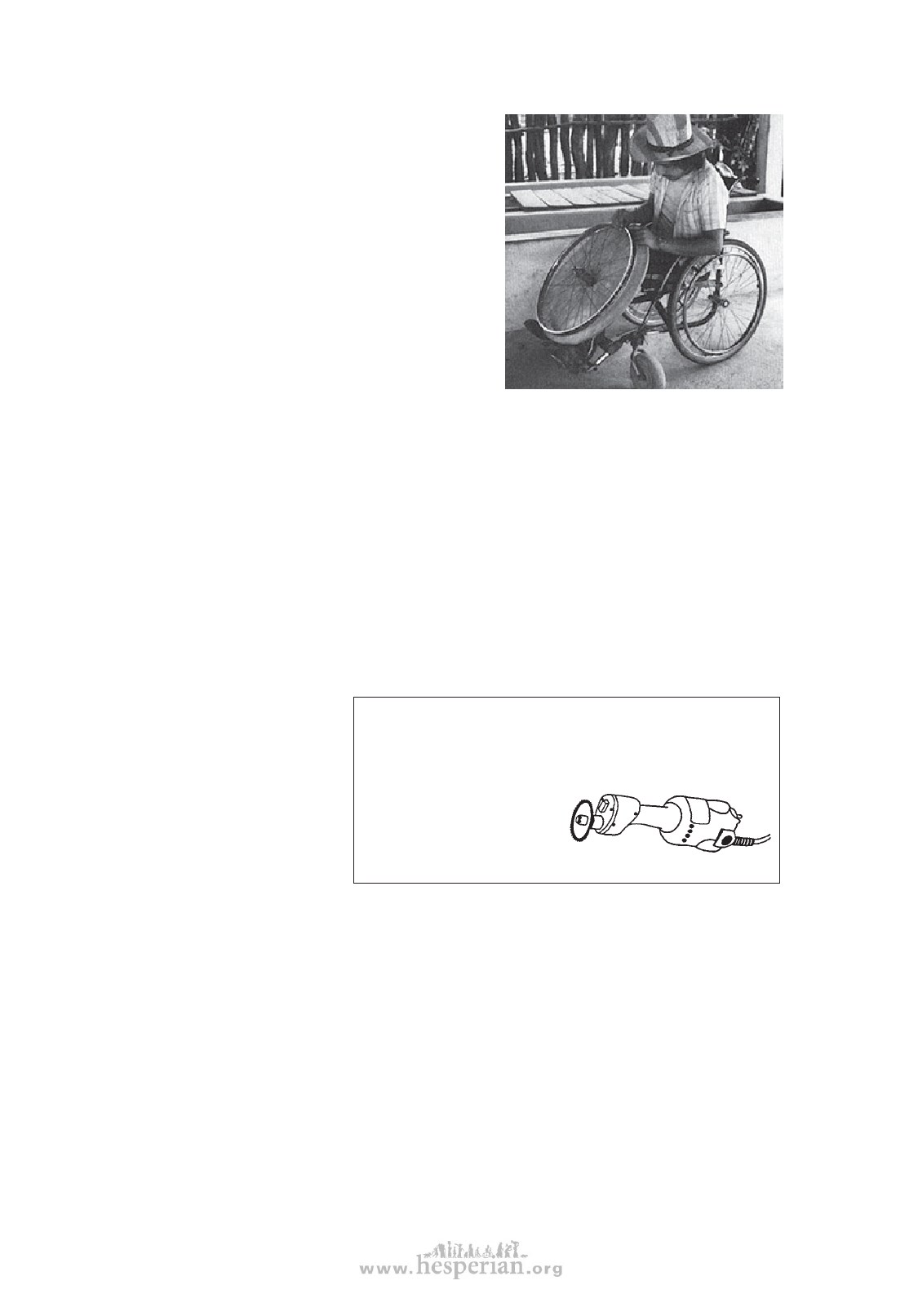
536 chapter 57
Arrangement of work space
Each program needs to plan its own use of space.
However, a few things are important if persons in
wheelchairs will be workers:
• Enough space should be allowed everywhere for
2 wheelchairs to pass each other.
• At least some of the workbenches should be low enough
to work at from a wheelchair or stool. Build them so that
wheelchairs can get close to or under them with as few
obstacles as possible.
• Tools and supplies should be stored within easy reach of
workers in wheelchairs. Also, switches and power outlets.
The drawing on p. 535 shows how the
workshop of PROJIMO is arranged. We
include it as an example, not as a model.
Photo: Richard Parker, PROJIMO
Tools and Equipment
What is needed will depend on what activities the shop includes, how simple or
complex is the technology used for each activity, and whether or not electric power
and tools are available. Nearly all aids can be made of local materials with hand
tools, and without electricity. Even wheelchairs, if made of wood, can be built with
few tools or equipment. The small amount of welding required for axles could perhaps
be done by the nearest welding or auto repair shop. However, having a few time- and
effort-saving tools can make work easier, faster, and more enjoyable: a sewing
machine, a grinding wheel (whether hand crank or electric), and a gas or electric stove
(to heat plastic for braces). Welding equipment or a blacksmith’s forge and bellows
makes possible the production of many things.
Basic tools and equipment for
the shop will be discussed in
more detail in this section of the
book, PART 3, the chapters of
which describe making different
kinds of aids.
Training for shop skills
One very expensive but important piece of equipment
is an electric cast cutter. It is an extremely useful tool
for removing plaster casts and for cutting molded plastic
braces from plaster forms. It is also a relatively safe tool,
because the blade vibrates
but does not turn, so it
cuts hard things like plaster
more easily than soft things
like skin and flesh.
Possible ways for learning different shop skills were discussed in Chapter 54.
Here we will only repeat that one of the best ways to learn shop skills is through
‘apprenticeship’, or learning-by-doing under the guidance of someone with more
experience. Perhaps local craftspersons, such as carpenters, welders, and shoemakers
would be willing to help teach members of the team. If the team has one or two
persons with basic crafts experience, they can teach the others. For brace and limb
making, it may help if one of the rehabilitation team has a chance to visit and learn in
an orthotics and prosthetics shop. Or perhaps a skilled brace or limb maker can come
for a few weeks to help set up shop, obtain basic materials, and teach the local team.
With an active, learning-by-doing approach, together with hard work to meet daily
needs, team members can quickly become relatively skillful. On the other hand, if the
team is made up, at least in part, of young disabled persons who have never worked
before or cooperated as members of a team, both learning and work may at first
progress more slowly.
Disabled village Children